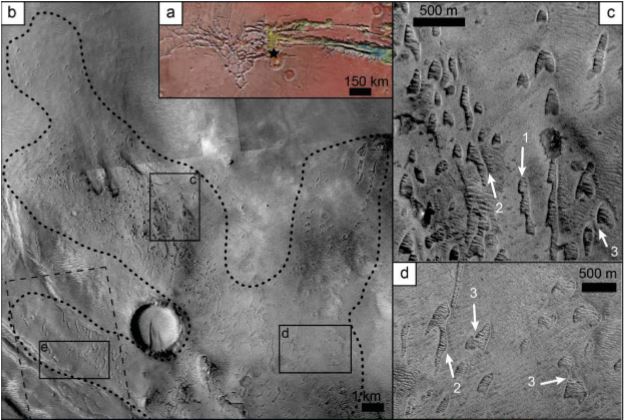
Mars is a desert planet, a lot like some deserts on Earth, but much colder. Also just like Earth, the Martian deserts have vast dunes, ranging from small sand ripples (technically not dunes) to towering, cliff-like true dunes of fine sand. But – while various types of dunes have been seen from orbit and up close by Mars rovers, currently still active and gradually making their way across the landscape – now another kind of dune has been found on Mars as well. Scientists call these ghost dunes, and they are very ancient. They reported the finding in GeoSpace on July 10, 2018. The new research paper was just published in the Journal of Geophysical Research: Planets.
These ghost dunes are not active dunes today. Rather, they are the remains of previous ancient dunes that left pit-like depressions in the ground after they eroded away. Hundreds of these crescent-shaped pits have been discovered, each about the size of the U.S. Capitol building. As Mackenzie Day, a planetary geomorphologist at the University of Washington in Seattle and an author of the new study, explained:
Any one of these pits is not enough to tell you that it’s a dune, or from an ancient dune field, but when you put them all together, they have so many commonalities with dunes on Mars and on Earth that you have to employ some kind of fantastic explanation to explain them as anything other than dunes.
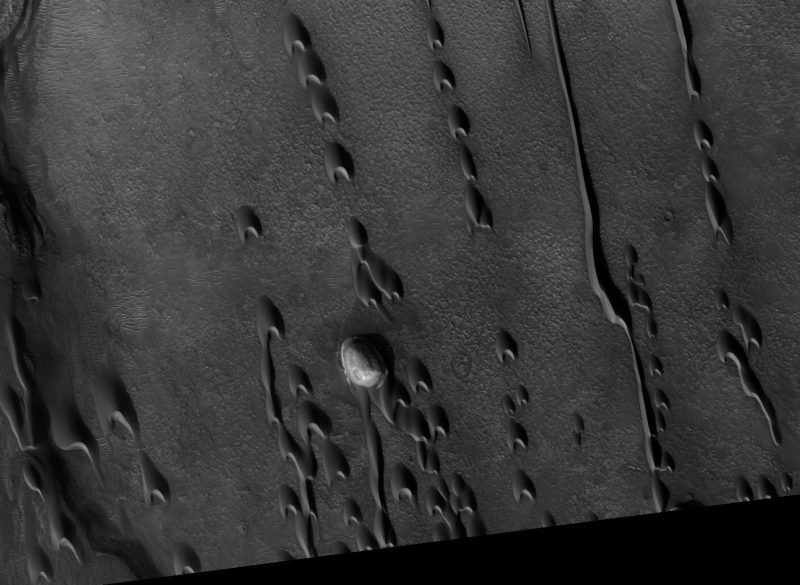
How do ghost dunes form? On Earth, ghost dunes may have been partially buried by lava or water-borne sediments. For these Martian ghost dunes, when the lava or sediments hardened, they preserved the contours of the dunes. The remaining top portions of the dunes were then eroded away by winds, which scoured them out, leaving only the “mold” outlines of the former dunes. Now they look like pits with hardened edges.
These dunes’ existence on Mars provide more clues as to what conditions were like billions of years ago, in particular, winds. As Day noted:
One of the cool things about the ghost dunes is that they tell us, for sure, that the wind on Mars was different in the ancient past, when they formed. The fact that the wind was different [when the ghost dunes formed] tells us that the environmental conditions on Mars aren’t static over long time scales, they have changed over the past couple billion years, something we need to know to interpret the geology on Mars.
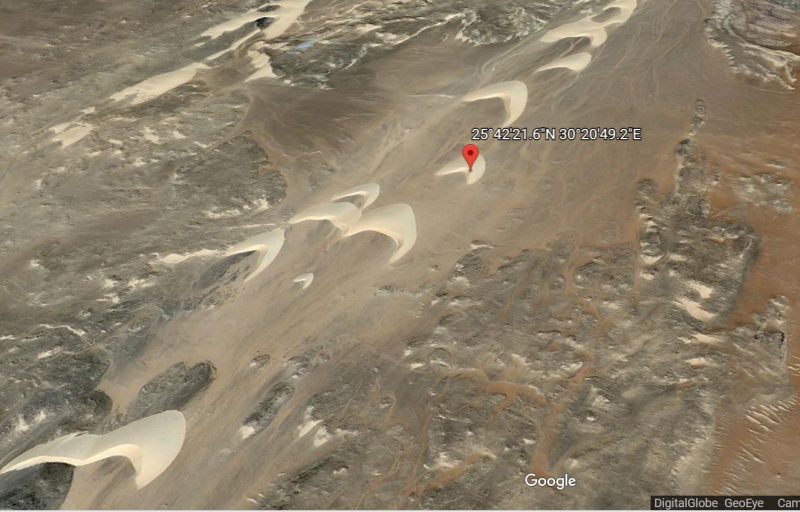
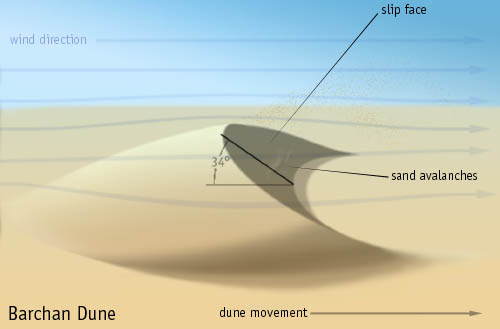
The Martian ghost dunes were found in orbital images of Hellas Planitia basin and Noctis Labyrinthus. They are similar to ones discovered in the Snake River Plain in eastern Idaho in 2016. More than 480 potential dune molds were discovered in orbital images of Noctis Labyrinthus alone, and more than 300 in Hellas Planitia, by Day and co-author David Catling. Noctis Labyrinthus is a region of jumbled plateaus just west of Valles Marineris, the largest-known canyon in the solar system. Hellas Planitia is a massive 4-billion-year-old impact crater over 1,678 miles (2,700 km) across in the southern hemisphere.
The shapes of the ghost dunes on Mars are crescents, just like barchan dunes on Earth, meaning that the original dunes would have been very similar to barchan dunes, the most common type on both Mars and Earth. The “horns” or tips of the crescents point in the direction of the prevailing wind. This type of dunes tends to form on flat terrain where there is little or no vegetation. The fact that there are so many of these pits in each location points to them being the remains of once-active dune fields. As Day noted:
They are all going the same way, which you would expect for dunes because they are all migrating and forming in the same wind regime. So just the shape and size tell us that these are features that are coming from an ancient dune system.
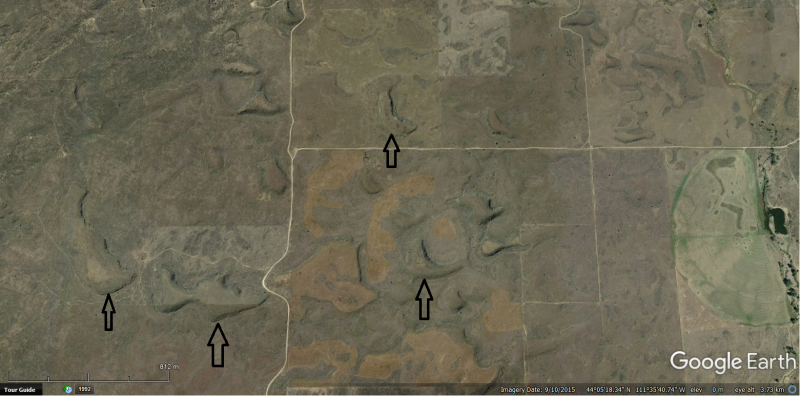
Analysis of the ghost dunes on Mars indicates that the original dunes were quite large – about 130 feet (40 meters) tall at Noctis Labyrinthus and 246 feet (75 meters) tall at Hellas basin. By comparison, the Curiosity rover has studied a series of dunes near the base of Mount Sharp in Gale Crater. The striking Namib Dune is about 16 feet (5 meters) tall.
As well as providing fascinating clues about ancient environmental conditions on Mars, these ghost dunes may also be a good place to search for evidence of past life. As mentioned in the summary in the new paper:
Ancient dunes in two places on Mars were partially buried and then eroded away, leaving behind dune-shaped pits that preserve information about the ancient environment. These pits may contain ancient dune sandstones around the edges of the pits and could be a good place to look for evidence of ancient life. The shapes of the pits also tell us how the winds behaved in the past.

And as Day noted also:
We know that dunes on Earth can support life, and dunes on Earth are very similar to dunes on Mars. One problem that Mars has that Earth doesn’t is the surface radiation. If you are inside a dune, or at the bottom of a dune, and you are microbial life, the dune is protecting you from a lot of that radiation. There is probably nothing living there now. But if there ever was anything on Mars, this is a better place than average to look.
Bottom line: As well as being common on Earth, dunes have also been found on Mars, Venus, Titan and even comet 67P. Now another type of dune has been discovered on Mars – “ghost dunes,” the pit-like remains of ancient, once-active dunes which have mostly eroded away. They bear a strong similarity to present-day dunes and may even hold clues to past life on the red planet.
Source: Dune Casts Preserved by Partial Burial: The First Identification of Ghost Dune Pits on Mars
Enjoying EarthSky so far? Sign up for our free daily newsletter today!











